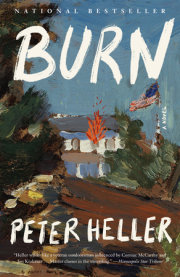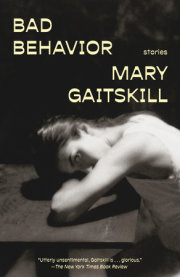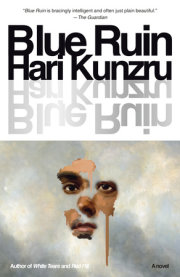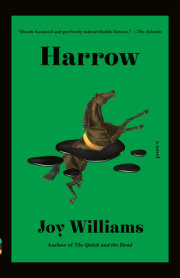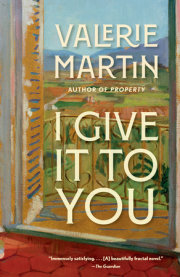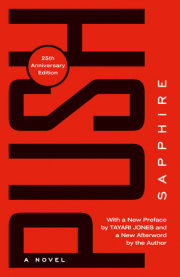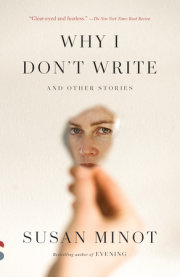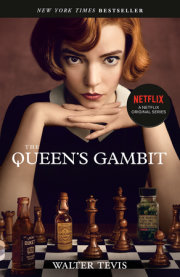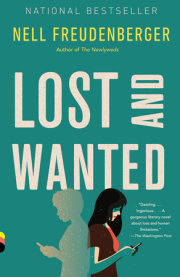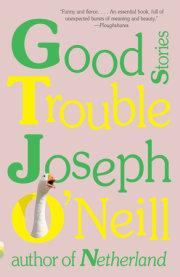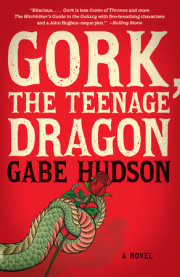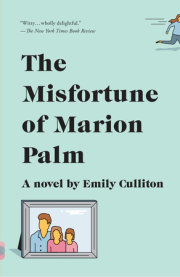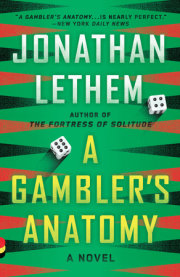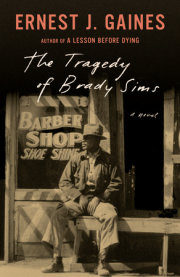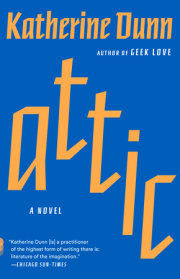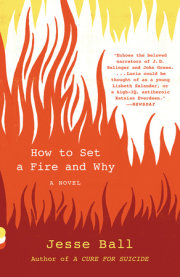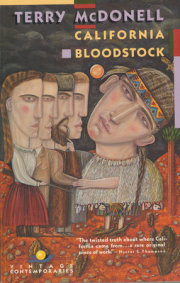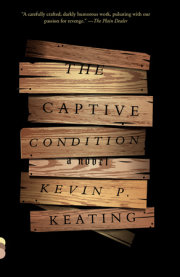DR. APELLES
1. From an early age, from the time Bimaadiz was fi ve or six, upon watching the men prepare to hunt, he would set up a piteous wail until Jiigibiig - not without some embarrassment - fi tted him with his own set of snowshoes made just for him and told him to follow along. Once in the bush he quieted down and never once scared the game by making noise and never once ruined the hunt by urinating when the wind might blow the scent toward the game. He was happy only when he was in the woods - and so, since Jiigibiig and Zhookaagiizhigookwe only wanted Bimaadiz to be happy, they let him go hunting at his pleasure. By the time he turned sixteen (and the time at which our story really begins), he was such an accomplished hunter he single - handedly supplied the village with most of the meat it needed. Such was his skill and care that Jiigibiig let the youngster use the Winchester repeating rifl e. Bimaadiz didn't need more than one shot, unless there was more than one deer or moose, but it was an honor to carry it. Jiigibiig and Zhookaagiizhigookwe, and those who remembered how he was found, suspected his power was the result of his contact with the cow moose during his infancy. Once, after hearing Bimaadiz shoot, Jiigibiig walked back into the woods with a sled to help him haul out his catch (for he was sure to have killed something, no doubt there was meat cooling on the ground), and he saw Bimaadiz kneeling over a dead moose, singing gently to the animal as he skinned it. It sounded like a lullaby, not a victory song, and the way Bimaadiz skinned the animal made the scene seem more like a birth than butchery. Because of the nimbus of affection surrounding him and because of the gifts given to him by his fi rst mother and the milk he received from his second mother, the moose, Bimaadiz grew into a singular young man. He was tall and strong but not thick; his body was supple and slender, with wide shoulders and very long fi ngers. His waist was narrow, but like a coiled spring - full of potential strength. His black hair was thick and smooth and he kept it cut short and parted in the middle, slicked down with hair oil. All the girls, even the older women, gasped when he walked by. It was a good life at Agencytown in those years; meat was never so plentiful and everyone loved the quiet hunter who provided for them so well.
2. Eta had grown up, too. She alone, perhaps, possessed more beauty than Bimaadiz did. She was tall for her age, and though not fi ne boned, she was lean and strong. Yet she had delicate fi ngers, and straight black hair that was always in two braids that hung down to her lower back. Her waist was narrow and her breasts, in advance of her years, were round and fi rm. All the boys and all the men sighed when she walked past. Her skin was smooth, clear, coppery, and healthy year round, except on her left cheek there was a dark round mark, very faint, that looked as though it had been left there when the wolf who had suckled her had kissed her cheek with her nose. It was really only a birthmark, it had been there before the she - wolf nosed the infant, but Aantti and Mary liked to think the wolf had left its mark. It seemed to the villagers that Eta had acquired some of the wolf's characteristics: she was incredibly intelligent, patient, concerned for others, and serious when anyone was looking, but silly and girl - like when she thought she was unobserved. Aantti and Mary were overjoyed at the unexpected gift of a daughter, especially since they thought they would never have one of their own. And so, being the object of so much happiness, Eta grew up receiving happiness. Her parents doted on her and gave her whatever it was that she wanted. They didn't have much to give - a poor sawyer and his Indian wife. Buttons, a bit of cloth, these were her toys. But all the same, the girl didn't want much. And she worked hard. Once her mother saw her hanging off the pump handle, her feet off the ground, as she tried to fi ll the water bucket. She helped her mother in all things - fetching water, wrapping big blue stem with wiigoob to make brooms and whisks. The thing she really wanted was to accompany her mother on the trapline, and this from even before she could walk properly. Mary bundled her in furs and placed her in the toboggan along with the snares and mink bait and set off for the string of lean - tos and temporary shelters along their trapping grounds. Mary never had to worry that Eta would struggle out of her wrappings or cry with impatience or trample the clean trails where she set the snares for rabbit and fox. Eta stayed in the toboggan, and as long as she could see above the tumble of tools and furs and watch Mary's hands at work, she was happy. Even when she was teething, all her mother had to do, upon fi nding a rabbit in a snare, was cut off the lower leg and hand it to Eta for her to chew on - the fl esh was so tough and cold, so laced with tendons that the rubbery texture soothed Eta's gums and she did not cry and sat quietly and observed Mary's broad back in front of the heavily loaded toboggan. As soon as she could walk, Eta followed behind the toboggan. Sometimes Mary pulled out of sight because Eta was still a small child and could not keep up, but all she had to do was follow the marks left by the toboggan and she would catch up eventually. By the time she was six years old she was setting all the rabbit snares herself. They never ate so many rabbits as when Eta set her snares. She secured them at just the right height and was so adept at matching the color of the snare to its surroundings that even a creature as suspicious as a rabbit could not see it. Mary said nothing about why she thought Eta was such a good trapper, but she suspected it was a result of her contact with the she - wolf, a benefi t of the wolf's milk. By the time Eta was twelve years old (and the point at which our story starts), she had taken over all the trapping. Mary could stay in the village and found much relief in her daughter's abilities; Mary was getting old and trapping had become diffi cult. For Eta trapping was as easy as breathing. She loaded the sled herself and, sometimes with a team of dogs pulling the sled, sometimes pulling it herself, set off for weeks at a time. When she came back the sled would always be full of fur - beaver, mink, martin, fi sher, weasel, bobcat, lynx - and loaded with meat too because sometimes she did some hunting on the side. Aantti was so pleased he gave her his puukko, the only possession that remained with him that he had taken from Finland. It had been his father's and the curved steel blade was perfect for skinning. Eta kept it sharp and made sure it never rusted. Who could hope for a better child? Skilled, earnest, respectful, concerned only for her parents and the animals she trapped. Her parents' only worry was about her beauty. She was so beautiful she caused everyone near her to shudder with longing, to stand up straight, to talk loudly in voices meant for her to hear. Some of them bragged about what they'd caught in their traps. But this only made her ignore them all the more. Eta loved the animals she trapped and took care to put their carcasses where the dogs would not ravage them. She brushed their fur before she sold them, conscious always of the life the animals were bestowing on her family. To brag about killing them was beneath her contempt. So, for the time being, Aantti and Mary put their worries aside. Eta seemed to be safe from the dangers of desire.
3. Bimaadiz had one other interest other than hunting and that was Eta. As for the beautiful girl, Bimaadiz was as precious to her as the animals she trapped. From an early age Bimaadiz's hunting and Eta's trapping had brought them together since his hunting grounds and her trapline overlapped. Bimaadiz, drawing out the fi rst syllable of her name, would say “Eh - taa” - and shyly, in response, she would elongate the second syllable of his name, saying Bi - maaa - diz” - and so they had a special of addressing each other and took the greatest pleasure in each other's company. Bimaadiz would tell Eta where he had seen some rich fox runs and so, on his advice, Eta would hang her snares there to catch them. For her part, upon seeing moose tracks around an isolated slough, she would inform Bimaadiz and, sure enough, a few days later he would have killed a fat cow and a tender calf, enough to feed to the whole village for a week. They were such good friends that he would save the tongue for her and her parents. And having caught a fawn in one her snares, she tanned the hide and sewed it into a bandolier bag for Bimaadiz to keep his shells and food in. When she was sick, he would check her traps for her, and she would kill some game for him when he had other chores to do around Agencytown and could not get out into the woods. But they were children after all, and so their activities weren't always so serious. As a joke she made a doll out of marsh grass (having no cornhusks at that season to make a proper doll). She used the guard hairs from a fi sher for the doll's braids, and the broken trigger from a steel trap was used to represent his gun. All in all it was a good likeness of Bimaadiz. Seeing some deer tracks she set the doll on the trail where she knew Bimaadiz would fi nd it. Bimaadiz also made trinkets for his friend - toy snares only big enough for mice and hoops made from willow twigs for stretching them. This continued - their ideal friendship, their ideal life, until the spirits conspired to make things more diffi cult for the two. Dr Apelles looks back down at the manuscript. The bell will sound at any moment now. His translation has lodged itself deep in his consciousness. It, and another signifi cant question, continue to plague him. But now, it is no accident, his thoughts turn to the library - not this one, not the archive - in which he works. It is universally acknowledged that - in addition to the history of Charlemagne and of the printing press and also in addition to narratives told to us by a friend detailing the dreams of other friends of his whom we do not know - the description of a person's typical day at work is among the most boring kind of story in existence. However, since Dr Apelles' vacation in the country of his imagination, governed in part by the itinerary of the manuscript, which, it must be said, is also impossibly linked to his daily work, we must follow him to work and hear out the story of his days. The bell will ring soon. It should be said that the archive to which he goes every other Friday is, strictly speaking, not a library, and neither is the building in which he works the other nine days out of the fortnight. Those days, the nine days (not counting holidays and weekends) out of fourteen that form the architecture of his life if not the action (though this will change), are spent at RECAP, which, as we have said, is a library but also is not a library. Since, if it isn't apparent yet, RECAP is a place where books are captured, tagged, and then withheld from - not released into - the general population of other books; where, to put it another way, books are forced into a system designed to keep track of how they are forgotten; that is, designed to give structure and meaning to ignorance and anonymity; to create a special place for books that haven't been read or if they have, not often enough; all of this is to say that, contrary to what we have come to expect from stories such as this - the forgotten or unknown or undervalued or obsolete signifi cance of Dr Apelles' works and days - the dusty corners of his life, if his life were a house (and if it were we would expect to fi nd it represented by, signifi ed by, a single dusty houseplant, an umbrella, or a shoe tree at best, and an empty fl ower pot, a persistent water ring on the fl oor, and a broken bit of string, at worst), is where we should begin looking at the no longer dreary dream of Dr Apelles' days. He had long been settled in apartment 33 J. Long enough to have begun to feel as though he owned the place. He was well thought of in the neighborhood of the other apartments. Having lived there for so long, he possessed a remarkable amount of information about his neighbors: their ages and ailments, the progressive ages of their children, their various and varied occupations and so on. Most of all, he was quite good at remembering names. And so, when in conversation with his neighbors they always felt, given Dr Apelles' polite and thoroughly informed interest, that his portraits of them, of their public and semi - public virtues, were such accurate and pleasing likenesses that he was, as far as they were concerned, the perfect neighbor. In short, he flattered them, but not intentionally.
Copyright © 2008 by David Treuer. All rights reserved. No part of this excerpt may be reproduced or reprinted without permission in writing from the publisher.





